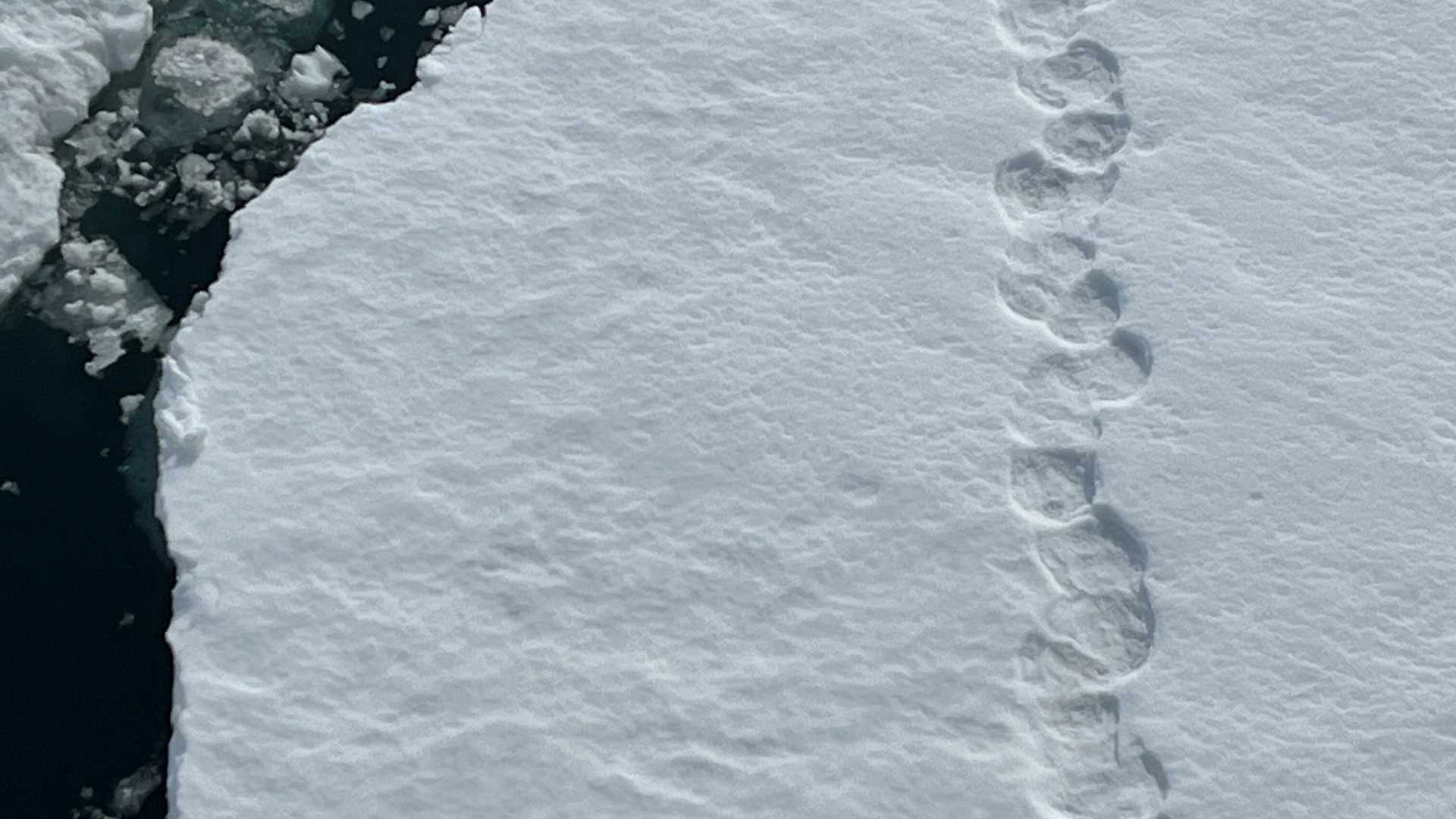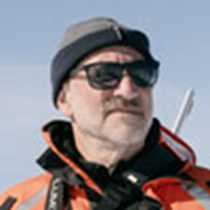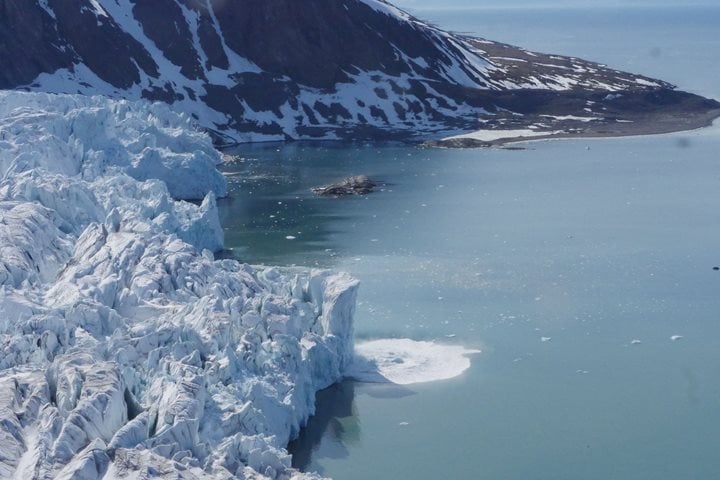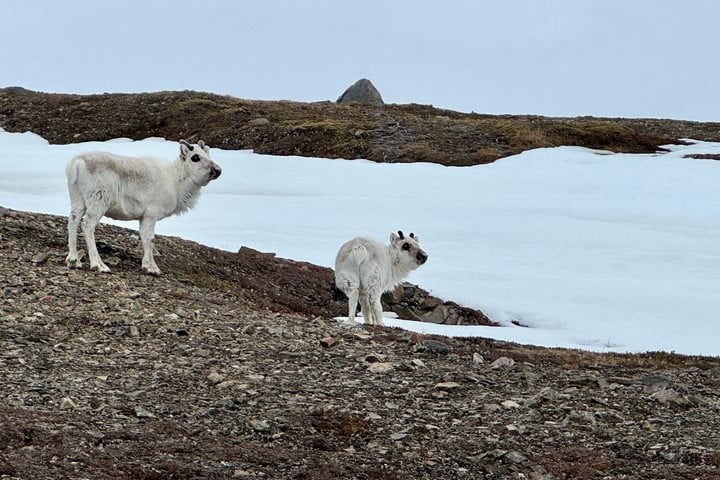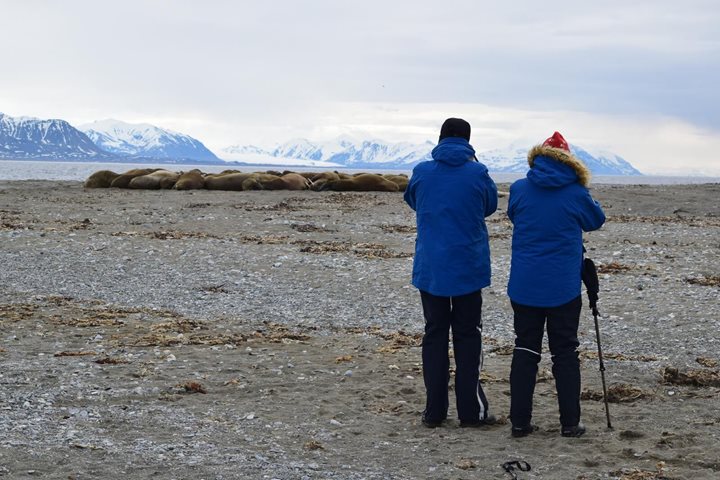We began the day cruising the edge of the fast ice on the east side of Spitsbergen, a critical habitat for many of the region’s animals. The season has been unusually warm, and there is less ice still anchored to the land than is typical for this time of year. Even the sea ice seems reduced from what we’ve seen in past seasons. We were hoping to spot our first polar bear after breakfast, and after first spotting a few walruses in the water and on the ice, we were not disappointed.
We spotted a lone bear far from the ice edge, back where the shore and the ice meet, a long way from where the ship could reach. We observed the bear for half an hour or so before it wandered up onto the hillside above the shore. This seemed a bit odd because there were still lots of seals visible on the fast ice. The contrast of the bear against the snow free hillside made it easy to see, and we kept watching this majestic animal. There were also a few reindeer on the hillside, and we watched as the bear attempted to run a reindeer down. Bears have great speed but little stamina, relying on surprise rather than endurance. After a second failed attempt, the bear looked like it had had enough of trying to catch a much faster animal. This behavior has recently been reported from elsewhere on Svalbard, but it was thrilling to see it in person. Perhaps the bears are learning from one another. Diversifying their food resources is one way bears may be adapting to climate change.
We continued cruising near Negribreen glacier and looking for more wildlife in the afternoon. Again, nature did not disappoint as our sharp-eyed naturalists spotted a pod of belugas swimming in the choppy waters. Despite the blustery conditions, most guests were out on deck and quickly learned to spot these elusive animals as they surfaced to breathe.
We got underway in the late afternoon and headed for tomorrow’s adventures. We kept our eyes peeled during dinner and were rewarded with the sight of a walrus hauling itself out onto the ice as dessert was being served.
Photo caption and photographer: Polar bear tracks across the sea ice. The tracks look at least several days old and appear to have been made before the ice began to break up. We saw several ice pans like this, some tracks quite old and others more recent. Photo by Dan Odess

